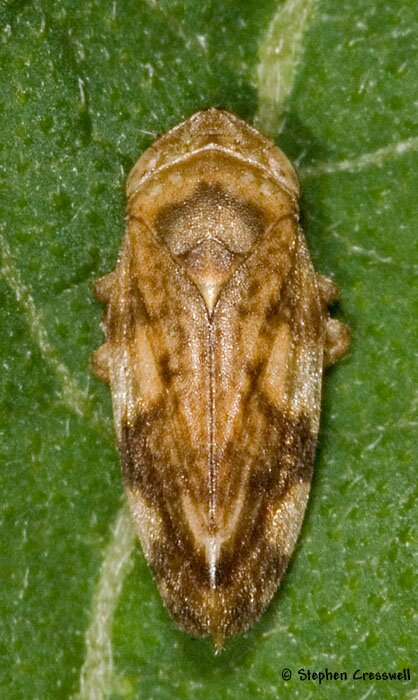
Family: Aphrophoridae
Subfamily: None defined in Aphrophoridae
Length: typically about 6 mm
Philaenus spumarius has a bewildering array of color forms and markings. It also has an enormously wide range, across North America, Europe, and Asia, and elsewhere, being found in areas of high relative humidity. Identifying the host plant won't help much with identification, since this species can reproduce on a great variety of plants.
Despite the variability of markings and the wide distribution of this species, researchers have repeatedly demonstrated these variable spittlebugs are in one species. For example, Yurtsever (2001) collected many different color forms in Britain, then conducted controlled breeding experiments in the laboratory, with a majority of cases resulting in successful reproduction. The same author in 2002 reported crossing experiments between individuals collected in Wales and individuals collected in New Zealand. Eight of eighteen crossings were successful.
In the 2001 study Yurtsever also demonstrated that many egg clutches "involved at least two males paternity," with the last male to mate with the female fathering up to 91% of the offspring.
Thompson (1988) reported evidence that the darker color forms are more common in the northern part of the species range, suggesting that the darker color helped keep the hoppers temperature sufficiently elevated in the cooler locations.
Karban and Strauss (2004) reported evidence that the Meadow Spittlebug is expanding its range northward, at least in some parts of its range, quite possibly as a result of rising mean annual temperatures (global warming).
Some of the many plants that provide a home for Philaenus spumarius are Pearly Everlasting, Bladder Campion, Sulphur Cinquefoil, and various Goldenrods.


